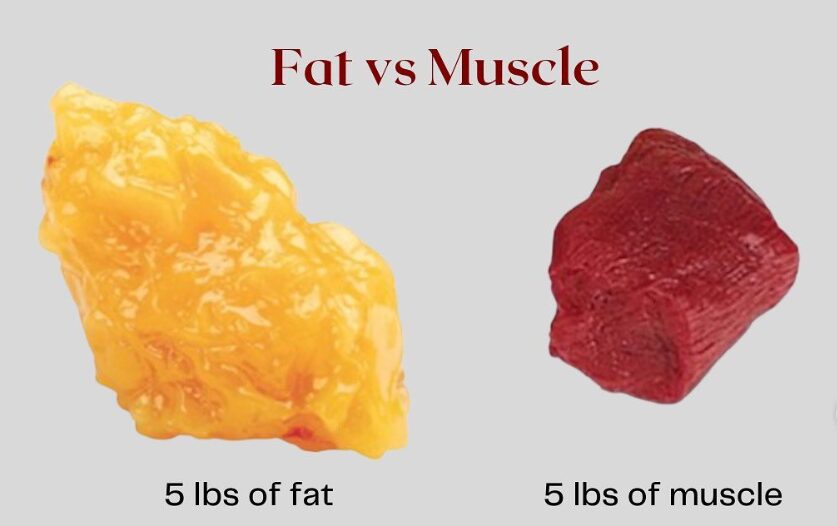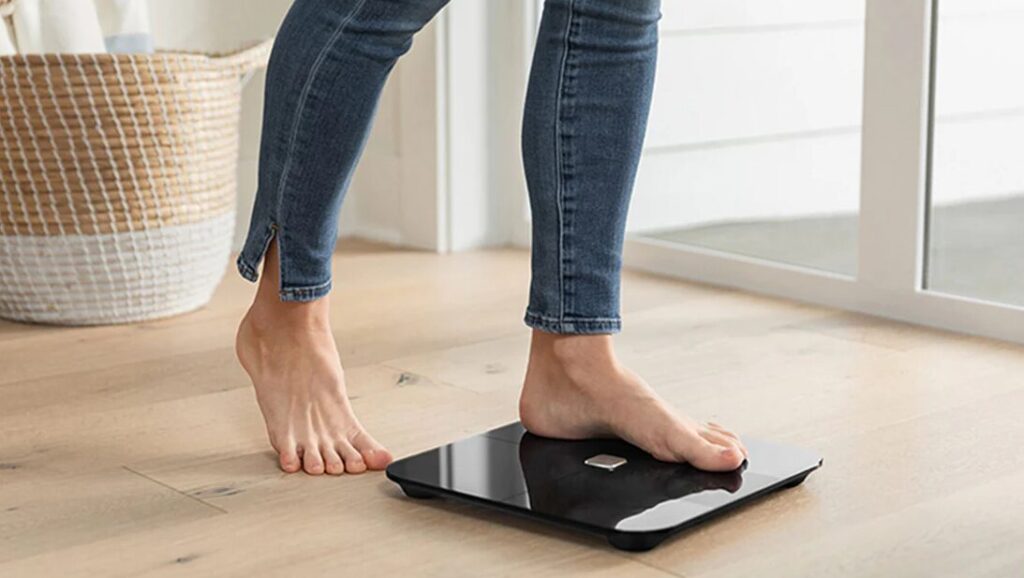Muscle tissue is 18% denser than fat, meaning you can look leaner without significant weight loss. Your scale only shows total weight, not composition, so don’t be discouraged by stable numbers if clothes fit better. For accurate tracking, consider DEXA scans, bioelectrical impedance analyzers, or skinfold calipers alongside progress photos. Focus on resistance training, protein intake, and proper sleep to improve your fat-to-muscle ratio.
The following strategies will transform your understanding of true fitness progress.
The Science Behind Fat vs. Muscle Density
While many people assume a pound is simply a pound, the reality is that muscle and fat differ dramatically in their physical properties. Muscle tissue is roughly 18% denser than fat tissue, which means it occupies less space under your skin while weighing more.
This density difference is essential to understanding your body composition. When you improve your fat-to-muscle ratio through strength training, you might not see dramatic changes on the scale, but you’ll notice significant visual differences in the mirror.
Muscle tissue also contributes to a higher metabolic rate, burning more calories even at rest. For every pound of muscle you gain, your body burns approximately 6-10 additional calories daily – a key factor in long-term weight management and overall health.

Why the Scale Can Be Misleading
Even though you can see that your body is improving, your weight may not change much even if you continue to exercise and eat healthily.
Your body is changing, which is why it is happening. You’re likely losing body fat and gaining lean muscle mass simultaneously. Your weight may remain the same or even increase as you become healthier and leaner.
Don’t rely solely on the scale to monitor your progress toward a healthy body composition. Make use of additional fitness evaluation metrics, such as body fat percentages, progress pictures, and clothing fit.

Measuring Body Composition Beyond Weight
Since traditional scales only capture total weight, measuring your body composition requires more sophisticated methods to reveal what’s actually happening beneath the surface. Tools like DEXA scans, bioelectrical impedance analyzers, and skinfold calipers provide detailed breakdowns of your fat, muscle, and bone percentages.
For effective fitness progress tracking, consider combining these measurements with progress photos and performance metrics. This all-encompassing approach helps you monitor muscle growth while confirming fat loss is occurring in the right places. You’ll also better understand how your nutrition balance impacts body composition changes.
Remember that muscle preservation becomes increasingly important as you age. By tracking composition rather than just weight, you’ll make smarter decisions about your training and recovery needs.

Health Benefits of Improving Your Fat-to-Muscle Ratio
Improving your fat-to-muscle ratio has big effects on your health that go beyond how you look. When you do resistance workouts that change the way you distribute your weight, your basal metabolic rate will go up a lot, which means you’ll burn more calories even when you’re not working out.
This change from muscle to fat doesn’t just change how you look; it also changes how your body works in a big way. You’ll notice that your joints are healthier, your insulin sensitivity is better, and your inflammation is lower. Keeping your muscle mass will help keep your organs working properly and your hormones in balance.
The benefits for your heart and blood vessels are just as impressive. They include lower blood pressure and better cholesterol levels, which make all of your body’s systems work better.
Effective Strategies to Build Muscle While Reducing Fat
Transforming your body composition requires a multi-faceted approach that simultaneously signals your body to preserve and build muscle while mobilizing fat stores. Start by incorporating progressive resistance training 3-4 times weekly, focusing on compound movements that engage multiple muscle groups.
Prioritize protein intake of 1.6-2.2g per kilogram of bodyweight to support muscle synthesis. Create a moderate caloric deficit (10-20% below maintenance) while maintaining sufficient carbohydrates to fuel workouts. Don’t cut calories too drastically, as this can trigger muscle breakdown.
Sleep 7-9 hours nightly to optimize hormones that support muscle growth and fat metabolism. Consider strategic cardio like HIIT sessions twice weekly to accelerate fat loss without hampering recovery from strength training.
Frequently Asked Questions
How Does Altitude Affect Fat-To-Muscle Ratio Measurements?
At higher altitudes, you’ll notice temporary changes in your fat-to-muscle ratio measurements due to dehydration, fluid shifts, and altered metabolism. These variations don’t reflect actual body composition changes and typically normalize with acclimatization.
Can Certain Medications Influence My Body Composition Results?
Yes, many medications can alter your body composition results. Steroids, antidepressants, insulin, and hormone therapies may increase water retention, affect metabolism, or change fat distribution patterns when you’re measured.
How Often Should I Reassess My Fat-To-Muscle Ratio?
Reassess your fat-to-muscle ratio every 4-8 weeks. This timeframe allows meaningful changes to occur while providing regular feedback on your progress without becoming obsessive with measurements.
Does Muscle Memory Impact Regaining Favorable Body Composition After Breaks?
Yes, muscle memory helps you regain lost muscle more quickly after breaks from training. Your body maintains cellular adaptations that allow for faster recovery of both strength and favorable body composition when you resume exercise.
How Do Hormonal Cycles Affect Body Composition Measurements in Women?
During your menstrual cycle, hormonal fluctuations cause water retention and bloating that can temporarily alter your measurements. Track your composition at consistent cycle points to get more accurate data on your actual fat-to-muscle changes.



